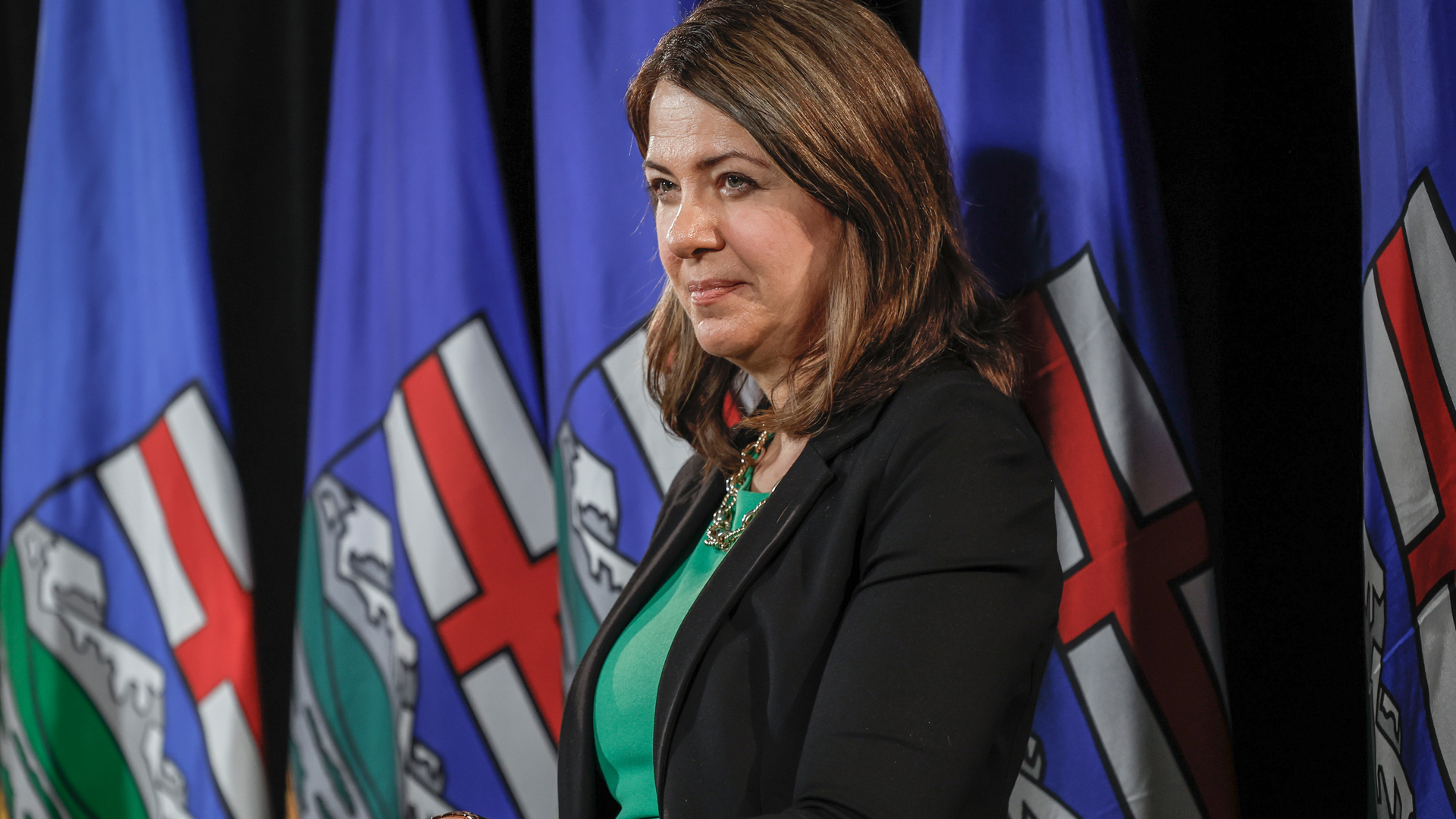
Alberta Premier Danielle Smith launched the United Conservative Party’s re-election campaign by promising a new bracket for Alberta’s personal income tax system that the UCP says would save every Alberta taxpayer a substantial amount of money.
The new tax rate, which would come into force Jan. 1, would be eight per cent for incomes below $60,000. The policy backgrounder issued by the UCP suggests this tax cut would mean that “every Albertan earning $60,000 or more will save $760” and “Albertans earning less than $60,000 will see a 20 per cent reduction in their provincial tax bill.”
Taking action toward dismantling the long-standing flat tax and creating a more progressive tax system should be applauded. The evidence shows that more progressivity is actually more efficient. But would the benefits of this proposal to Albertans be as simple as the UCP claims? The answer is no.
[wd_hustle id=”20″ type=”embedded”/]
Taxes are, after all, complicated, and it is not true that every taxpayer would save what the UCP claims. Certainly, the average taxpayer with income of more than $22,000 would see their taxes go down, but not by as much as the UCP suggests. Perhaps more telling, those with total income below $22,000 would see no tax savings. Who would save the most? People with total income above $60,000 – but the distribution of these savings would differ widely across taxpayer types, including by gender.
The policy change
Currently in Alberta, the first $142,292 in reported taxable income is taxed by the province at a rate of 10 per cent. The UCP announcement proposes that if re-elected, it would introduce another tax bracket, making six in total. We outline below the math being used to arrive at the tax savings with the new tax brackets. The table shows how the first $60,000 in taxable income is currently taxed as well as how it would be taxed under the UCP proposal.
The proposal assumes that taxpayers derive a benefit from only one non-refundable tax credit – the basic personal amount (BPA) as outlined in the fifth row of the table. However, the value of the BPA would be reduced under the UCP proposal because non-refundable tax credits are valued at the lowest statutory tax rate, which under this proposal would drop to eight per cent from 10 per cent.
Seems simple enough. But Alberta’s tax system has 24 different non-refundable tax credits, and these credits interact in wild and wacky ways. For people claiming other tax credits along with the BPA, their taxes would not decline by as much.
How would this impact taxpayers?
To understand the true impact of tax changes, you have to move well beyond a simplistic calculation. Using the social policy simulation database and model(SPDS/M) – a Statistics Canada product designed to assess cost implications and distributional effects of changes to the personal tax system – we simulate the effect of the UCP proposal on provincial taxes, taking into account all the interactions.
Once all these interactions have been taken into account, we find that on average taxpayers in Alberta would save $314 in provincial taxes. Taxpayers earning in the bottom 20 per cent – those with total income less than the BPA – would see no change because they do not owe taxes (and this would continue). For taxpayers who have total income above the BPA but under $60,000, they would see an average benefit of $186.
While these taxpayers would be subject to the lower tax rate, the value of their credits would also decline, and they would not be able to take full advantage of the new tax bracket. Finally, for taxpayers with total income above $60,000, the average decrease in provincial taxes would be $598. Overall, the higher a person’s total income, the higher the benefit they would receive under the UCP proposal.
By gender, men would see a higher reduction in their taxes (an average $351 decrease) compared with women (an average $275 decrease). This is because there are more women than men in the lower tax brackets, where benefits would be lower. Conversely, there are more men than women in the higher tax brackets, meaning a higher benefit for men under the proposal.
In figure 1 below, we plot the total amount of potential tax savings for women and men by income. Among those with higher incomes, men outnumber women, so more of the tax savings would go to men. Overall, men would receive 57 per cent of the savings whereas women would receive 43 per cent.
What are the policy alternatives?
The UCP proposal is but one way of decreasing taxes. There are alternative policies that could be considered that would also meet this objective. In particular, the UCP government froze the tax thresholds in 2019 and did not reindex them until 2022. This means that for two years, Albertans paid higher taxes “by stealth.” When taxes were reindexed, they were reindexed by taking the 2019 values and inflating by 2.3 per cent.
This means that for the years 2020 and 2021, inflation was effectively ignored, and taxes were reindexed at a lower level than what they would have been had they been indexed every year. Had tax rates not been de-indexed, the cumulative savings for taxpayers between 2020 and 2024 would have helped all taxpayers but particularly those with lower incomes ($21,000 to $28,000) because they would pay less in taxes under an indexation scheme compared to the UCP proposal. In other words, this proposal partially untangles the mess the UCP made when it de-indexed tax thresholds, but the distributional effects of the policies differ.
Bottom line
This new tax scheme would bring greater progressivity into the Alberta tax system, and that should be applauded. It is a strong proposal that would save many taxpayers money at a time when affordability issues loom large. However, the savings that any one taxpayer would derive is not as simple at the UCP suggests. The exact amount would depend on the unique circumstances of individuals and on average would likely be less than what is being claimed.
Additionally, such a tax change would have distributional impacts, benefiting higher-income earners more than lower-income earners and benefitting men more than women. It does not appear that the proposed tax change was analyzed for its effect on different groups, including gender. There was no gender-based analysis plus (GBA+) done. When conducting a GBA+ analysis, taking into account income distributions before setting income thresholds is integral to ensuring equality across genders.
Will future generations reap the Alberta Advantage?
Finally, from a public finance perspective, this may not be a good move. Cutting personal income taxes means that the government collects less revenue. If government services are to be at a minimum maintained, this suggests that the UCP is proposing to increase the province’s reliance on resource revenues. Resource royalties in Alberta are, and have always been, volatile – which is what has led to the ongoing boom-and-bust cycle of Alberta budgets. Given that the price of a barrel of oil has once again fallen well below the projections used in the 2023 Alberta budget, this looms large for government policy decisions.
Election day in Alberta is May 29. Ultimately, voters will have to decide whether the promise of reduced taxes for some outweighs a lack of concern for distributional impacts and fiscal stability.














